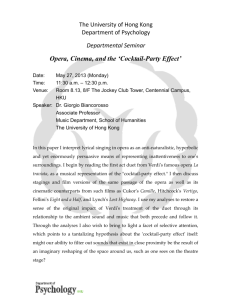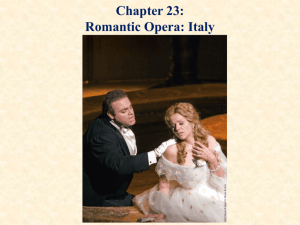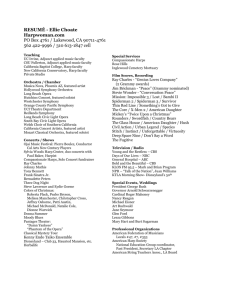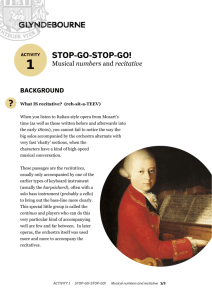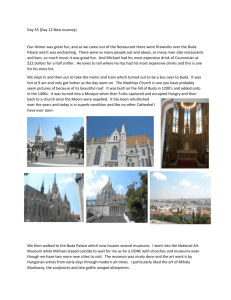Terms and Definitions – March 8
advertisement
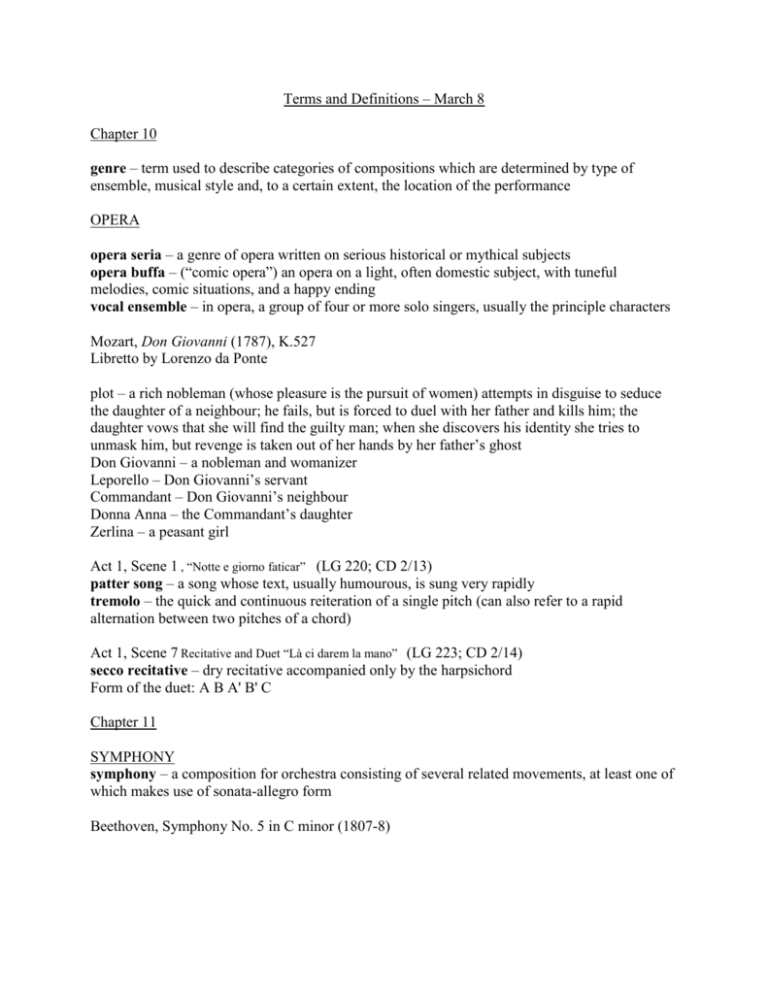
Terms and Definitions – March 8 Chapter 10 genre – term used to describe categories of compositions which are determined by type of ensemble, musical style and, to a certain extent, the location of the performance OPERA opera seria – a genre of opera written on serious historical or mythical subjects opera buffa – (“comic opera”) an opera on a light, often domestic subject, with tuneful melodies, comic situations, and a happy ending vocal ensemble – in opera, a group of four or more solo singers, usually the principle characters Mozart, Don Giovanni (1787), K.527 Libretto by Lorenzo da Ponte plot – a rich nobleman (whose pleasure is the pursuit of women) attempts in disguise to seduce the daughter of a neighbour; he fails, but is forced to duel with her father and kills him; the daughter vows that she will find the guilty man; when she discovers his identity she tries to unmask him, but revenge is taken out of her hands by her father’s ghost Don Giovanni – a nobleman and womanizer Leporello – Don Giovanni’s servant Commandant – Don Giovanni’s neighbour Donna Anna – the Commandant’s daughter Zerlina – a peasant girl Act 1, Scene 1 , “Notte e giorno faticar” (LG 220; CD 2/13) patter song – a song whose text, usually humourous, is sung very rapidly tremolo – the quick and continuous reiteration of a single pitch (can also refer to a rapid alternation between two pitches of a chord) Act 1, Scene 7 Recitative and Duet “Là ci darem la mano” (LG 223; CD 2/14) secco recitative – dry recitative accompanied only by the harpsichord Form of the duet: A B A' B' C Chapter 11 SYMPHONY symphony – a composition for orchestra consisting of several related movements, at least one of which makes use of sonata-allegro form Beethoven, Symphony No. 5 in C minor (1807-8)
